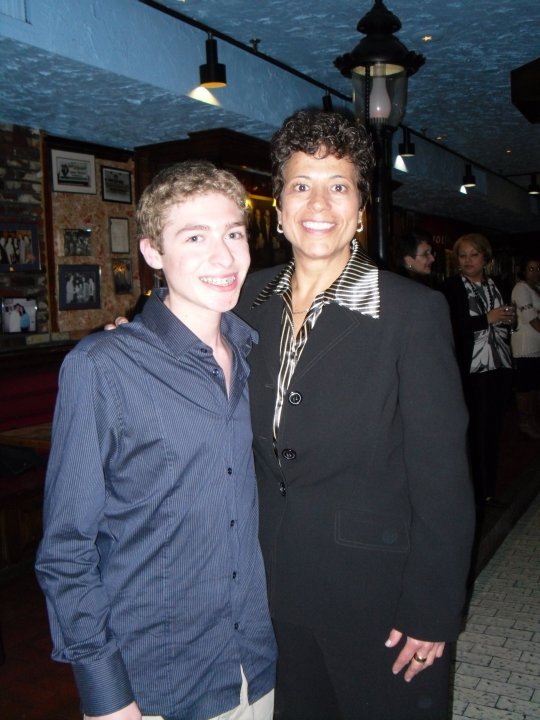
Logan’s Law: An Act Prohibiting the Devocalization of Dogs and Cats
As a freshman in high school, I filed a piece of state legislation to ban devocalization - the cruel surgery to cut out a dog or cat’s vocal cords to stifle or remove their voice. Almost two years later, having developed and executed a full-scale grassroots campaign with the help of volunteers around the state, Gov. Patrick signed the bill into law. This 1. made Massachusetts one of the first states in the country to ban devocalization (with others following after) and 2. made me the youngest person in US history to file and pass their own state law (at least at the time, I admittedly haven’t checked to see if this is still the case in over a decade).
During that legislative session, my law was the most talked about piece of legislation in the State House according to legislators (partially due to my age at the time), receiving more calls in support than any other. Out of almost 10,000 bills filed, Logan’s Law was one of only 305 passed, becoming Chapter 82 of the Acts 2010.
But it wasn’t easy.
There was heavy and very monied opposition from those who profit from devocalization (such as the large biotech industry in Massachusetts which often devocalizes the dogs they test on), and as for me? Well, I had a few pennies. Plus, I had to balance this full-time job with being a full-time high-schooler, so there was also that.
All of this is to say that to pass this law I had to be very - you guessed it - creative. And very scrappy. I had to think differently to get it done.
Below, I’ve detailed some of the creative, contrarian methods I used to pass this groundbreaking law.
-
Because most people weren’t aware of this surgery, we (the other leaders and I) first had to get out the word, and then had to creative a story that inspired people to act. We did this by focusing on personal stories of animals that were devocalized, using language that most citizens are comfortable with or passionate about while straying from language that can be alienating (PETA-type language, for example), along with utilizing evidence-based research and expert-driven testimony and facts. The combination of both helped make the case that this surgery needed to be banned.
-
During the two-year campaign, there were times when I was at the State House meeting with legislators and their staff twice a week, putting faces to names and developing important relationships. This strategy was part of the reason that we were able to bring over a quarter of the House and Senate on as Cosponsors, and why we had such strong legislative support from within the State House.
-
With no budget, we prioritized eared media and organic social media over paid media. We developed relationships with many local and national journalists, garnering featrues in major outlets that informed the public about the bill and what they could do to support it. We also utilized social media for community organizing and volunteer recruitment at a very early when it was unusual to use for non-personal use.
-
Due to having no budget, we relied on in-kind services from many supporters. For example, one volunteer fixed copy machines for a living. When fixing and testing them, she’d print our pamphlets and flyers, which otherwise would have been expensive. We also had in-kind legal support and more.
-
We developed partnerships with dozens of local and national brands and organizations, tapping into their reach to spread the word and drive action. From national chains like Petco to local shelters like the Berkshire Humane Society, this turned out to be a very useful strategy.
-
It was no secret that part of the interest in the bill was that a 15-year old filed it and was leading the campaign. Rather than avoid that fact, I strategically used it to garner press for the bill as it went through the House and Senate. I believe you always have to work with what you’ve got, and age, at the time, was one of those things.
-
Every weekend, myself and volunteers I organized leafleted in important districts with hyper-specific calls-to-action for their local Reps and Sentators. We prioritized speaking to the right people; the constituents of those who had power over the bill at each stage in the legislative process. We met people where they were, such as translating materials into spanish for certain districits
-
To create a compelling narrative, we relied heavily on experts weighing in and lending their support. But we didn’t just rely on veterinary or behavioral experts. We garnered testimony from clergy, local leaders, and more, to create a well-rounded strategy that spoke to many different types of people. At the House Judiciary hearing for the bill we had dozens of experts testifying, including myself.
-
Working on this bill was a full-time job, while being a full-time student. Every day, I needed to make dozens of phone calls, often send hundreds of emails, etc..Because of this, I came to an arrangement with my high school that allowed me an office space in the school several hours a day to do all of this.
-
My partner on the bill, an older woman with much more experience in grassroots campaigning than myself, was a firm believer in send individualized emails, and not using bulk email software. Though it took a lot longer, relying on hyper-personalized, non-marketing emails proved to be incredibly useful. To this day, I still rely heavily on this strategy in my work.








